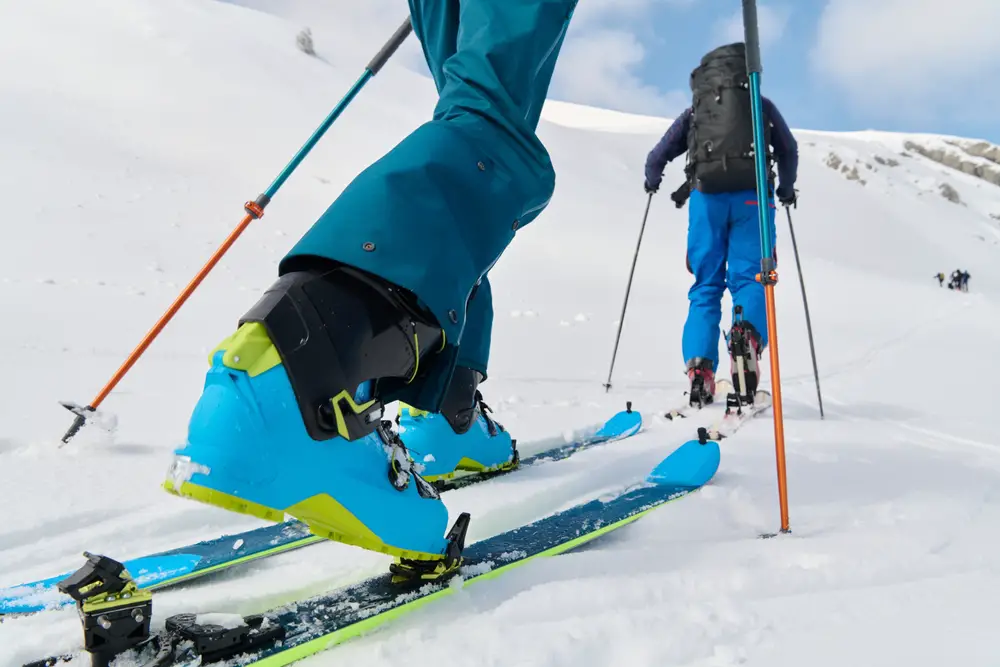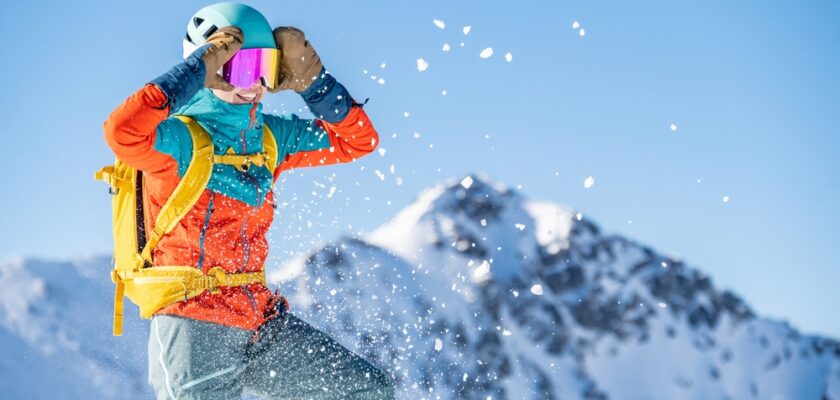Alpine skiing, one of the most popular winter sports, is practiced on snow-covered slopes where athletes slide down the mountain at high speed.
The sport has been part of the Winter Olympics since 1936 and requires not only a great deal of technical and physical skill from skiers, but also a very detailed understanding of its rules.
Learning the rules of alpine skiing is fundamental to ensuring the safety of participants and that competitions are fair. That’s why we’ve brought you this information!
In this content, then, we’re going to cover what the main rules of alpine skiing are, explaining everything from the structure and dimensions of the venue to infractions and penalties. Check it out!
Open your Betano account and get up to 1,000 reais in bonuses.
PIX payments, live games and super odds!
Click here to open your account!

Alpine skiing rules: complete list
- Piste;
- Types of race;
- Duration;
- Scoring;
- Competitors;
- Equipment;
- Safety;
- Infractions and penalties.
Alpine skiing rules: slope
Alpine skiing takes place on slopes that must be located in mountainous terrain, with a suitable gradient and covered in an even layer of snow.
The slopes vary in length and difficulty, depending on the type of race: slalom, giant slalom, super-G, downhill. We’ll find out more about them in the next topic!
Alpine skiing rules: types of races
In alpine skiing, there are different types of races, each with its own specificities. See what they are:
- Downhill (Free Descent): a speed event, with tracks that can have between 800 and 1,100 meters of vertical descent, as well as a length of up to 4 km.
- Super-G: this discipline combines elements of downhill and giant slalom, with vertical descents of between 500 and 650 meters for women, and 650 to 750 meters for men.
- Giant Slalom: has gates spaced 10 to 15 meters apart, with vertical descents of 300 to 400 meters for women and 400 to 450 meters for men.
- Slalom: this is the race with the closest gates, spaced 0.75 to 15 meters apart, and vertical descents of 180 to 220 meters for women and 180 to 250 meters for men.
Alpine skiing rules: duration
The duration of an alpine ski race is not defined by a specific time, but by the time it takes each competitor to complete the course.
In the case of the slalom and giant slalom, skiers make two descents on different courses, and the sum of the times determines the winner. In the downhill and super-G races, the competition consists of a single descent.
Alpine skiing rules: scoring
Scoring in alpine skiing is based on the time it takes each skier to complete the course. The skier with the shortest total time is then declared the winner.
In world and Olympic level competitions, points are awarded according to the ranking, which influences the overall standings for the season.
In addition to time, precision when passing through the gates is also crucial, as missing a gate results in disqualification.
Alpine skiing rules: competitors
The number of competitors in an alpine ski race can vary, but there is usually a fixed number of participants who advance to the second stage in slalom and giant slalom races.
In world-level competitions, the best 30 skiers from the first descent qualify for the second descent. Each country can enter a limited number of athletes, usually four to six, depending on the competition.
Alpine skiing rules: equipment
The equipment used in alpine skiing is regulated to ensure safety and fairness. Here are the main mandatory items that an alpine ski athlete must use in the competitions they take part in:
- Skis: skis must meet the specific length and radius of curvature specifications for each type of race.
- Boots: the boots used in alpine skiing need to be rigid and well-fitting to provide the necessary control for the athlete.
- Poles: in alpine skiing, poles are used for balance and momentum.
- Helmet: the use of helmets is compulsory for all races, and they must have specifications that guarantee protection against impacts.
- Clothing: Alpine ski clothing needs to be aerodynamic, made of materials that offer little wind resistance.
Alpine skiing rules: safety
Safety in alpine skiing is extremely important, as the sport takes place in environments that can be dangerous for athletes. The main safety rules in the sport are as follows:
- Inspection of the slope: before each race, the slope must be inspected to ensure that it is in safe condition for practicing the sport.
- Gates and markings: in alpine skiing the gates must always be visible and correctly positioned, preventing the athlete from not being able to see them and ending up in an accident.
- Rescue team: the presence of rescue teams along the entire slope is crucial.
- Athlete conduct: finally, skiers must follow the instructions of the officials and respect the flag signals, ensuring a safe and fair game for everyone.
Alpine skiing rules: infractions and penalties
Infringements in alpine skiing can result in penalties or disqualification, damaging the performance of the athlete and their team. Here are the main ones:
- Missing gates: the skier must pass between the two flags that form a gate. Failure to do so, for whatever reason, will result in disqualification.
- Illegal equipment: the use of equipment that does not meet the regulatory specifications results in disqualification.
- Unsportsmanlike conduct: any form of unsportsmanlike conduct practiced by the skier, such as intentionally harming another competitor, can result in severe penalties.
- Falsifying data: submitting false data or manipulating results also leads to disqualification, and legal action can be taken, as it is a crime.

Alpine skiing rules: complete list
- Piste;
- Types of race;
- Duration;
- Scoring;
- Competitors;
- Equipment;
- Safety;
- Infractions and penalties.
These are the main rules of alpine skiing! If you enjoyed learning about this sport, take the opportunity to continue browsing the site and check out more information about this and other sports!
Here you’ll find news, lists, special articles and much more about the world of sport!



